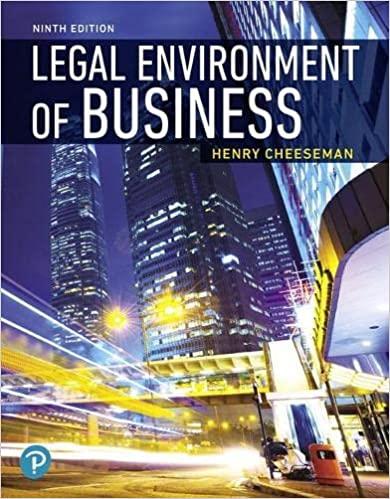Question
CASE STUDY The necessity of unifying the legal rules relating to negotiable instruments used ininternational tradehas long been felt, and considerable success in this direction
CASE STUDY
The necessity of unifying the legal rules relating to negotiable instruments used ininternational tradehas long been felt, and considerable success in this direction has been achieved. The principal rules in Englishlaware laid down in the Bills of Exchange Act of 1882. This act spread through the whole Commonwealth and also influenced the United States Negotiable Instruments Act proposed in 1896 and eventually adopted throughout the United States. This latter act has since been replaced by article 3 of the Uniform Commercial Code. On the Continent uniformity between the French and the German approach was first achieved at two conferences held at The Hague in 1910 and 1912 and finally by two Geneva conventions of 1930 and 1931 on uniform laws for drafts, promissory notes, and checks. These latter agreements included some uniform provisions on conflicts of law. These have been adopted by most European countries and by many states in other parts of the world. Neither England nor the United States accepted these conventions, however, partly for fear of upsetting the uniformity already achieved in the Anglo-American orbit. Whereas negotiable instruments embody a claim for thepaymentofmoney, documents of title embody claims togoods. The most common such documents are thebill of ladingand the warehouse receipt.
1. Sourcing from vital business law concepts, law is either ______ or ______ regulation.
2.Fundamentally, contravention or breaching of indenture inside business decree can be of what sort of breach?
3.Regulate the count contemporary to a promissory note.
4.As obser4ved in business law knowledge, a minor can be an?
5.What is used to represent the capital of a company?
6.QWhat is the appropriate meaning of "doctrine of corporate personality".
7.Identify the sort of appointment where agent is specifically appointed by the principal. What is the appointment for?
8.Determine the span of execution of ratification for an agent.
9.State and define the inference parties in a contract for sale make.
10.In the sale of goods, what does the phrase "goods" denote?
11.Centered on section 2(6) OF THE Sale of Goods Act, 1930 'future goods' implies?
12.What regulates Transfer of actionable claims?
Step by Step Solution
There are 3 Steps involved in it
Step: 1

Get Instant Access to Expert-Tailored Solutions
See step-by-step solutions with expert insights and AI powered tools for academic success
Step: 2

Step: 3

Ace Your Homework with AI
Get the answers you need in no time with our AI-driven, step-by-step assistance
Get Started


